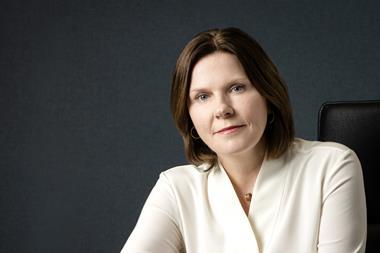Industry needs to ’adopt new technologies to future forecast’ because developing climate change risks are ’harder to insure as you can’t rely on historical data’, says senior manager
Earth Day on 22 April 2024 served as a timely reminder of the threat climate change poses to the environment. As industries and countries continue to focus on achieving net zero carbon dioxide emissions, the insurance industry has been grappling with the challenge of underwriting fluctuating risks and emerging solutions tied to climate change.

Recognising this, accelerator programme Lloyd’s Lab has been supporting insurtechs with climate change-based propositions, such as the use of satellite imagery for risk assessments or providing alternative insurance models.
The scheme’s eighth cohort, which started in April 2022, had a specific focus on insurtechs tackling decarbonisation and climate change, for example.
Lloyd’s Lab is currently working with its 12th cohort, which was announced in March 2024.
Rosie Denée, senior manager of Lloyd’s Lab, told Insurance Times: “We’ve had a lot of heavy climate focused solutions come through previous cohorts.
“What we are seeing for insurtechs that come through the lab is that firms are able to bring new insights and ways of understanding risk.
”They are trying to enable the insurers to insure the uninsurable because firms are looking at perils in such a granular way, which some of the traditional modelling just doesn’t encompass. But also, on a micro level, to enable more access to insurance.
“We all know that climate change is unpredictable – we don’t always know where the trends and patterns are coming in.
”Traditionally, insurance is always looking at historical data to predict the future. Where climate change is challenging is that no one knows what to expect. We need to adopt new technologies to future forecast what is happening through the best modelling.
”[Climate change-related risks are] harder to insure as you can’t rely on historical data in the same way as the traditional classes.”
Changing weather patterns linked to climate change are costing the insurance industry. For example, according to Swiss Re’s Sigma report, published on 26 March 2024, the insured costs of natural catastrophes have surpassed $100bn (£80bn).
Similarly, data published by aggregator Compare the Market in February 2024 found that unpredictable weather is pushing up premiums and causing more expensive and complex claims. It noted that home insurance policies rose by 36% in 2023’s fourth quarter, with an average policy costing £213 – this compares to £157 for the same quarter in 2022.
Meanwhile, buildings and contents insurance costs skyrocketed by 188% in August 2023, up from 149% in August 2022.
Denée said that data – particularly new data – will be key to cracking emerging, climate linked risks, as well as adopting an “experimenters’ mindset”.
Growth of parametric policies
Parametric insurance models have so far proved to be most popular in addressing climate change risks. A parametric insurance policy uses a trigger point and indemnity that are preset by the customer. When the agreed trigger point is met during an insured event, a claim is automatically actioned and the predetermined payout is delivered.
Read: Increasing natural catastrophe losses necessitate a resilience focus
Read: In Focus - How can parametric insurance policies improve processes for climate-related claims?
Explore more sustainability-related or insurtech content here, or discover other news analysis content here
For Stephen Lathrope, senior vice-president for solutions at ICEYE, the growth in parametric policies is not just down to the complexity of climate change risks – it is also because of a “hardening rate environment, stricter policy terms and conditions and the challenge securing adequate cover in highly exposed regions”.
He added: “The value of parametric-based solutions is clear. Such structures offer a very transparent and efficient way of providing coverage for flood losses. They also offer a very scalable solution.”
Two Lloyd’s Lab alumni using parametric policies to address climate change are FloodFlash and Previsico.
Previsico assesses flood risk using flood mapping data, issuing warnings to firms to address imminent flooding.
Jonathan Jackson, chief executive of Previsico, said: “Climate change means heavy rainfall events are increasingly unpredictable, with the volumes of rain being much greater. Also, places that were not considered to be at flood risk, suddenly experience flood.”
He referenced floods in Dubai in April 2024 as an example – the city saw a year and a half’s worth of its average rainfall descend in under 24 hours, although “flooding was previously viewed as low risk”.
In the UK, Storm Henk in January 2024 caused around £10m worth of damage, according to insurer NFU Mutual.
Jackson added: “Insurtechs tend to take a novel approach [to climate-related risks] and are typically much more agile. However, some incumbents do a good job addressing climate change risk. The Met Office has shown real leadership in its climate change modelling”.
FloodFlash, on the other hand, uses an Internet of Things (IoT) sensor to measure flood depth at a client’s property, which then automatically triggers a claim payout if the water level is above a pre-agreed point.
Former FloodFlash broker success manager, Ola Jacob, has long been an advocate of parametric insurance.
Jacob, who currently works as director of business development at Descartes Underwriting, said that “parametric and hybrid insurance policies are the way forward” during a panel discussion at Insurtech Insights’ 2024 conference.
He said that Descartes Underwriting paid out $15m (£11.9m) for a hurricane claim in 15 days last year via a parametric policy.
Jacob told delegates: “If [the client] had a traditional policy, [this] couldn’t be done because there wasn’t a lot of physical damage.”
Pulling on external data
Rosina Smith, chief product officer at McKenzie Intelligence Services, noted that “climate change, combined with other factors, is giving rise to more complex insurance challenges for the market”.
She explained: “While climate change is driving the changing behaviour and, in some cases, the location of destructive perils, such as Dubai’s flooding, it is not acting alone.”
She highlighted that “changes in land use, lack of appropriate infrastructure and [a concentration] of exposure in high risk areas are already having a proven impact on the challenges facing insurers”.
“In response, it is vital for insurers to develop an accurate and timely representation of real-world events as they are developing, to support effective event response, faster claims payments, better underwriting and mitigation of risks associated with climate change,” she added.
For Smith, the data needed to drive “actionable intelligence to support insurers and their customers more effectively already exists – it may just be outside of the insurance industry”.
For example, ValueSpace – which has been through Lloyd’s Lab twice – uses satellite data to provide risk assessments for dams and mines that are over 50-years-old, when they become more dangerous and harder to maintain.
Reijo Pold, founder and chief strategy officer of ValueSpace, said: “In subsidence, climate change has had a real impact, but also on infrastructure more widely – highways, railways, etc.”
For Pold, extreme weather resulting from climate change can push old dams “to the brink”, be this heavy rainfall or a heat wave.
Pold also agreed with Smith that modern methods of construction pose new risks that may be heightened by climate change, such as wooden frames on buildings and wildfire.
This is why Smith is an advocate for more private-public partnerships.
Lathrope, meanwhile, noted the “growing need for greater interaction between the public and private sectors to address the rising flood challenge in the UK”.
He emphasised that “more needed to be done” to improve market responsiveness to more frequent and severe floods.
Hosted by comedian and actor Tom Allen, 34 Gold, 23 Silver and 22 Bronze awards were handed out across an amazing 34 categories recognising brilliance and innovation right across the breadth of UK general insurance.



















































No comments yet